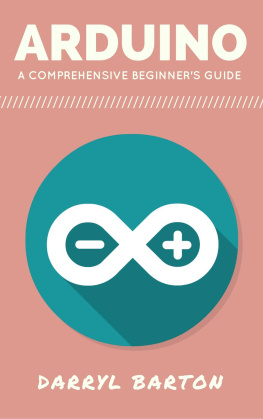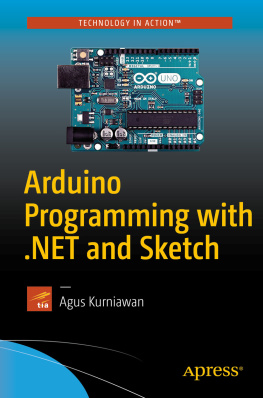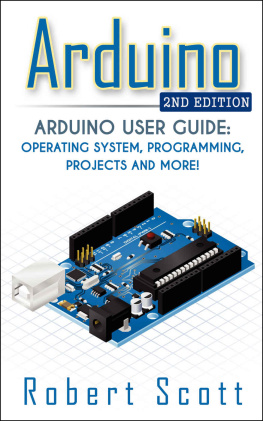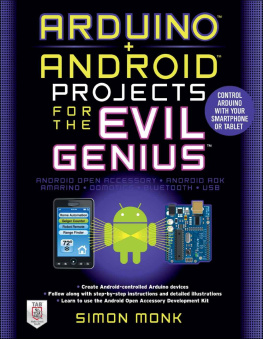Arduino Catenary
What is a microcontroller?
A large Arduino family was introduced
About hardware prototyping
Arduino software properties
Beginner Arduino
Intermediate Arduino: Inputs and Outputs
Project 01- IoT Fidget
Project 02 - 3 LED With Arduino 101
Project 03 - Ultrasonic Distance Sensor in Arduino
Project 04 - Flowing LED Lights With Arduino Uno R3
Project 05 - Light Sensor With Arduino in Tinkercad
Project 06 - DIY | 3x3x3 LED Cube for Arduino Nano+
Project 07 - Ultrasonic Sensor (HC-SR04)
Project 08 - How to Use an RGB LED
Project 09 - PIR Motion Sensor
Project 10 - DIY Arduino Obstacle Avoiding Car at Home
What is a microcontroller?
Arduino is about connecting things. We'll do that in a few minutes
after we learned more about microcontrollers in general and in particular
a large and wonderful Arduino family. This chapter will teach you how to be completely perfect
ready to enter code, phone, and check things with your new hardware friend. Yes, this will do
it happened quickly, very quickly; now let's go inside!
What is a microcontroller?
A microcontroller is an integrated circuit (IC) that contains all the main components of a standard
Computer, the following:
Processor
Memories
Edges
Inputs and outputs
The brain processor, the part where all the decisions are made and what
he can count.
Memories are often the two spaces where both the internal system and the user
elements are active (commonly called Read Only Memory (ROM) and Random
Access Memory (RAM)).
I describe in detail the artificial materials contained in the global board; these are
a very diverse range of integrated circuits with a major purpose: to support
processor and extend its power.
Inputs and outputs are means of international communication (worldwide
microcontroller) and the microcontroller itself.
The first single-chip processor was developed and developed by Intel Corporation in
In 1971 under the name Intel 4004. It was a 4-bit central processing unit (CPU).
Since the 70s, things have changed a lot and we have a lot of processors around us.
Look around, you will see your phone, your computer, and your screen. Processors or
microprocessors drive almost everything.
Compared to microprocessors, microcontrollers provide a way to reduce power
usage, size, and cost. Indeed, microprocessors, albeit faster than ever
processors embedded in microcontroller, requiring multiple interruptions in order to operate
work. The high level of integration provided by the microcontroller makes it friendly
of embedded programs that control the engine of the car, the remote control of your TV,
desktop equipment including your beautiful printer, household items, children's games,
cell phones, and I can go on
A large Arduino family was introduced
microcontroller based on a single board. It is the most popular platform targeted from the file
The cable platform is also first designed for popularity
the use of electronics in building collaborative projects for university students.
It is based on the Atmel AVR processor and offers many inputs and effects
on only one hardware item.
The project was launched in Italy in 2005 by founders Massimo Banzi and David
Cuartielles. Today it is one of the best examples of open source
concept, brought to the world of hardware and is often used only in the file
world software.
We are talking about the Arduino family because today we can count about 15 boards
Arduino-based, which is a funny meta-term to describe a different type of board
designs everything made using the Atmel AVR processor. The main difference between
Those boards are:
Processor type
Number of inputs and outputs
Form factor
Some Arduino boards have great power, considering the calculation speed,
some have more memory, some have more input / output (check more
Arduino Mega), some are designed to be integrated into complex projects as well
I have a very small form with inputs and very few results as I have been using
to tell my students each can find his friend in the Arduino family. There is also
boards that include parameters such as Ethernet Connectors or Bluetooth
modules, including antennas.
The magic behind this family is the fact that we can use the same Combined
Development Environment (IDE) on our computers on any of those boards.
Some bits need to be set properly but this is the same software as well
the language we will use:
An excellent but incomplete reference page for this can be found in Hardware.
I especially want you to check out the following models:
The Arduino Uno is the basic one with an interchangeable chipset
Arduino Mega, 2560 offers a plethora of inputs and effects
Arduino LilyPad, worn as accessories
Arduino Nano, very small
Throughout this book I will use Arduino Mega and Arduino Uno as well; but do not do it
fear, once you are familiar with the Arduino system, you will be able to use any
their
About hardware prototyping
We can easily design and build software today using many open sources
forums where you can find many useful communities on the web. I am
you are considering Processing, as well
openFrameworks (C ++ - based, check out, but
there are many others who sometimes use very different paradigms such as clicks
programming languages such as Pure Data For Windows.
Because we, the makers, are fully involved in artificial insemination, all of us
demand and need to build and build our tools and often means hardware
and electronic tools. We want to expand our computers with sensors, blinking
lamps, and even make independent gears.
Even testing for basic things like flashing a light emitting diode (LED), is true
incorporates many things from enabling low-level chipset systems,
from resistors value calculations to voltage-driven quartz clock setup. All those steps
it just gives heads to students and even those who are interested can be postponed to just do the initial testing.
Arduino appeared and changed everything in the world by showing that i
An inexpensive and all-encompassing solution (you have to pay $ 30 for Arduino Uno
R3), a cross-platform toolchain running Windows, OS X, and Linux, very simple
high-quality C language and a library that can also convert low-level pieces, and completely
expandable open source framework.
Indeed, with a small, well-equipped board, a USB cable, and your computer,
you can read electronica, embedded hardware program using C-language, and blink
your LED.
Hardware prototyping became (almost) as simple as software similarity due to
high level of integration between software and hardware provided by







